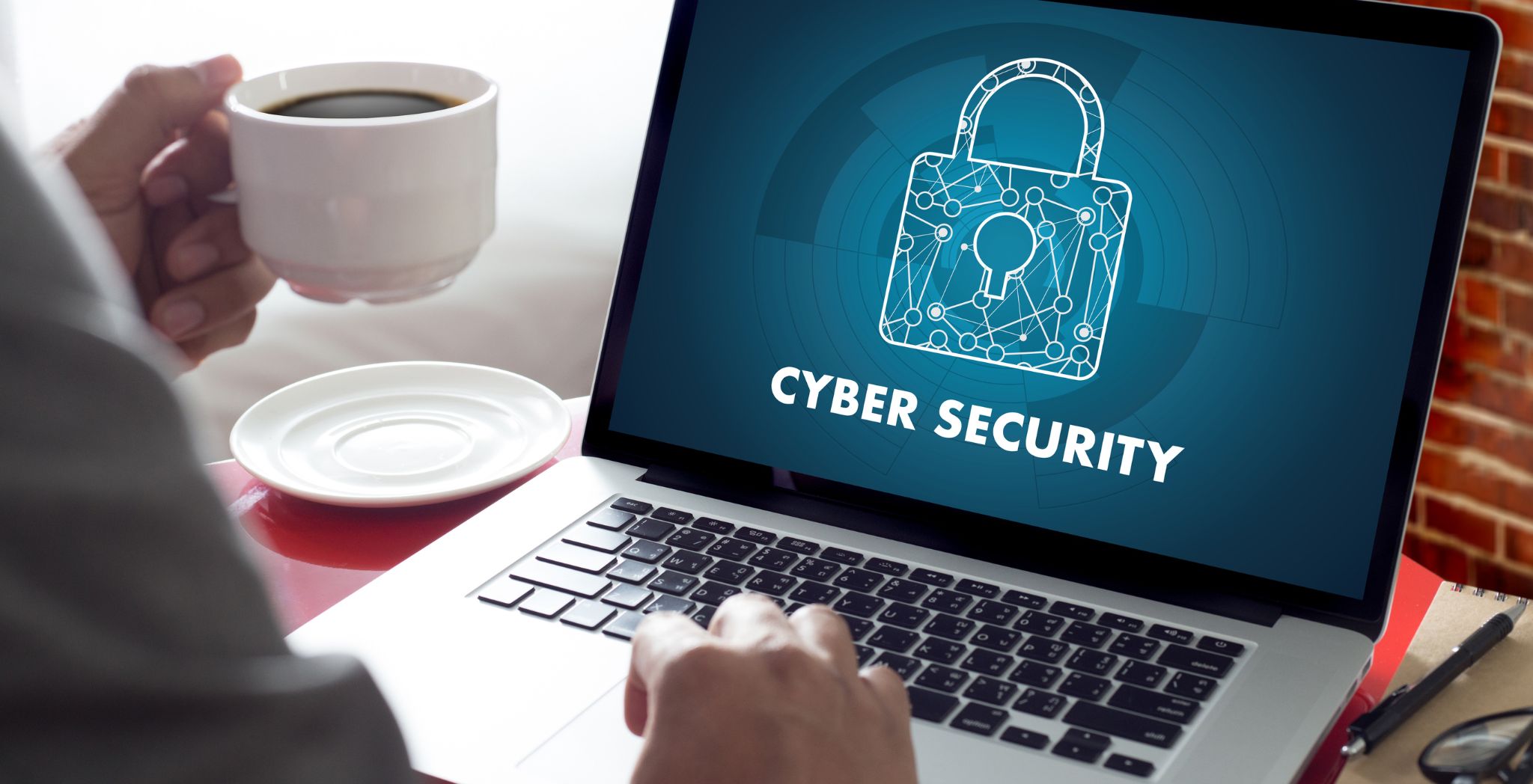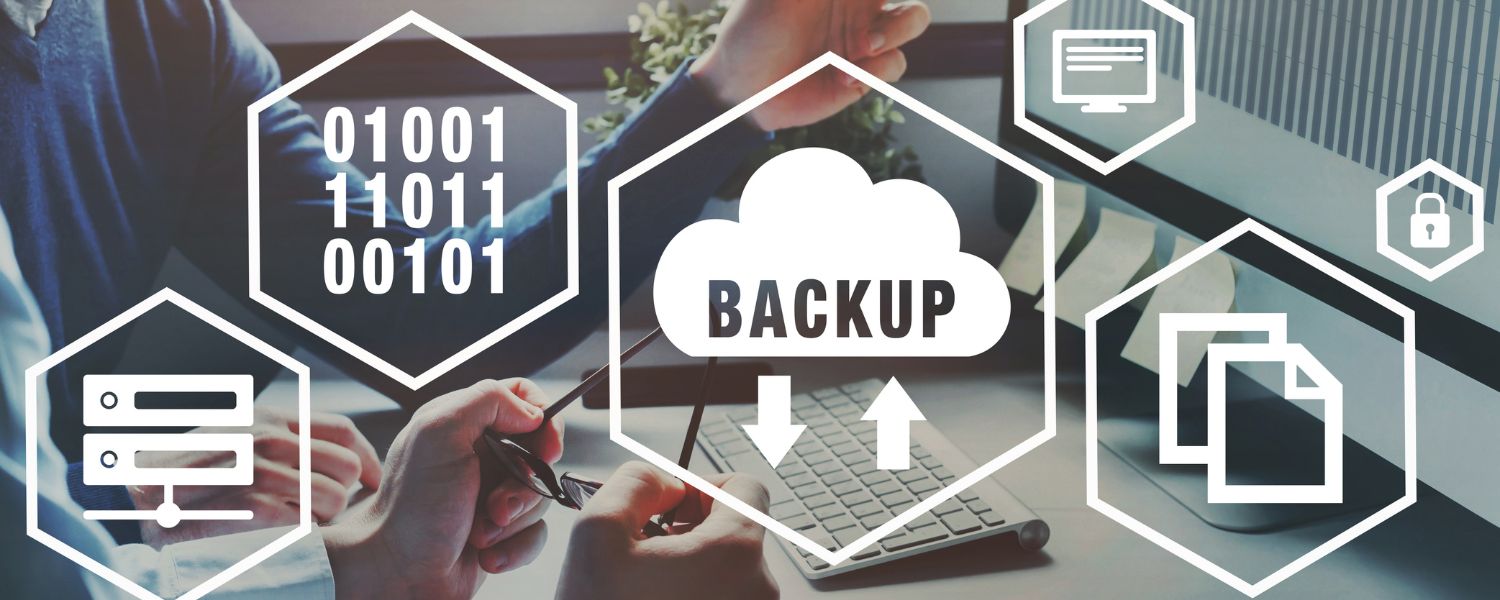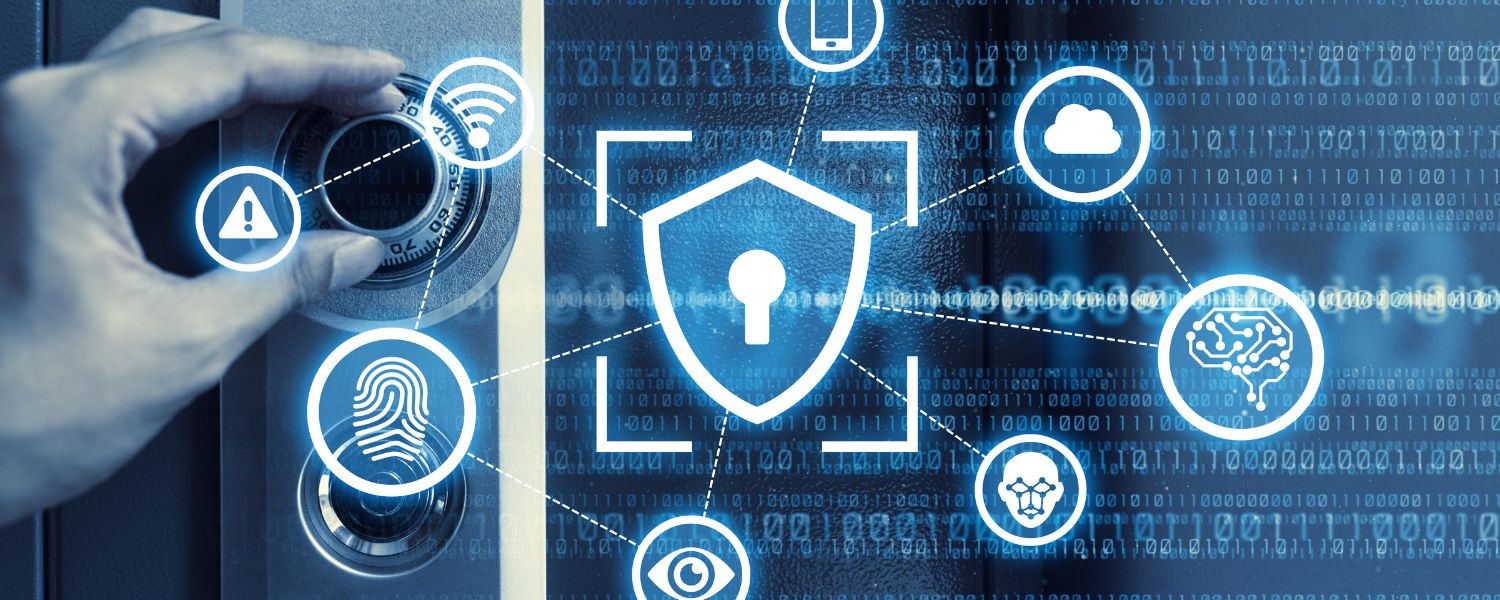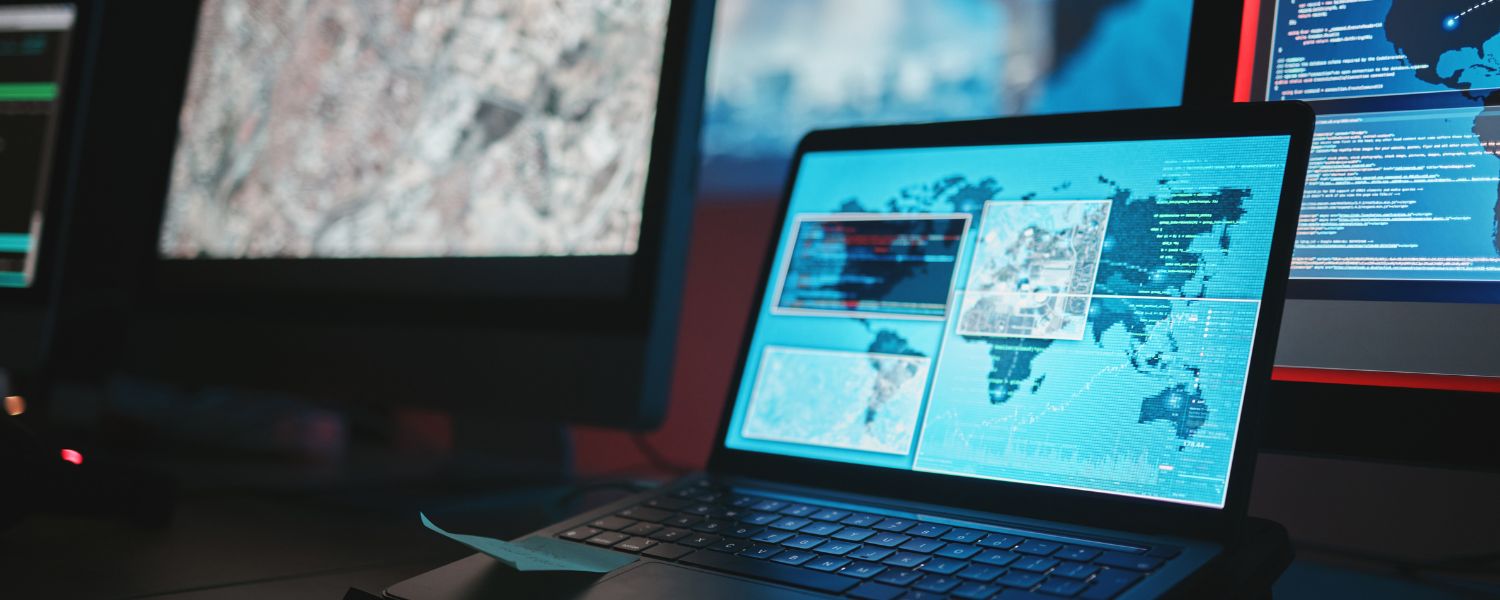In today's digital age, cyber threats loom large, posing significant challenges to individuals and businesses alike. As technology advances, so do the tactics and techniques employed by cybercriminals. Staying ahead of these evolving threats requires a proactive approach and a solid understanding of current trends in cybersecurity. In this blog, we explore the latest developments in cybersecurity and provide insights to help you bolster your defenses, enabling you to mitigate risks and safeguard sensitive data.
1. Internet of Things (IoT) Security Challenges
The proliferation of internet-connected devices presents unique security challenges. IoT devices, ranging from smart thermostats to industrial sensors, often lack robust security features, making them vulnerable to exploitation. As the number of connected devices grows, securing the IoT ecosystem becomes increasingly complex. Organizations must implement comprehensive security measures to protect against IoT-based threats.
One of the primary concerns with IoT devices is their susceptibility to cyber-attacks. Unlike traditional computing devices, many IoT devices lack robust security features, making them vulnerable to exploitation by malicious actors. Weak authentication mechanisms, insecure communication protocols, and unpatched vulnerabilities are common issues that plague IoT devices, leaving them susceptible to compromise. In addition to individual device vulnerabilities, the sheer number and diversity of IoT devices present challenges for managing and securing the IoT ecosystem. With more and more connected devices expected to be in use in the coming years, organizations face the daunting task of securing a vast and heterogeneous network of devices.
2. Zero Trust Data Resilience
Zero Trust security frameworks are gaining traction as organizations seek to enhance their resilience against cyber threats. Unlike traditional perimeter-based approaches, Zero Trust architectures assume that no entity, whether inside or outside the network, can be trusted by default. By implementing strict access controls and continuous monitoring, organizations can minimize the risk of unauthorized access and data breaches.
Zero Trust security is based on the principle of "never trust, always verify." In a Zero Trust architecture, access to resources is restricted based on the principle of least privilege, ensuring that users and devices only have access to the resources they need to perform their intended tasks. One of the key components of Zero Trust security is identity-based access controls. By verifying the identity of users and devices before granting access to resources, organizations can reduce the risk of unauthorized access and credential theft. Multi-factor authentication (MFA), biometric authentication, and device attestation are commonly used mechanisms for verifying identity in a Zero Trust environment. Continuous monitoring and behavioral analytics are also essential elements of a Zero Trust security strategy. By monitoring user and device behavior in real-time, organizations can detect anomalous activity and respond to potential security incidents before they escalate. Machine learning and artificial intelligence technologies play a crucial role in analyzing vast amounts of data to identify patterns indicative of malicious behavior.
3. Passkeys and Passwordless Technologies
Traditional password-based authentication methods are susceptible to phishing attacks and brute-force cracking attempts. Passwordless technologies, such as biometric authentication and cryptographic keys, offer a more secure alternative. By eliminating the reliance on passwords, organizations can strengthen their authentication processes and reduce the risk of credential theft.
Passwordless authentication is based on the concept of using something you are or something you have, rather than something you know, to verify your identity. Biometric authentication methods, such as fingerprint scanning, facial recognition, and iris scanning, leverage unique physiological characteristics to authenticate users.
Cryptographic keys, such as public-private key pairs, provide another secure authentication mechanism. In a passwordless authentication system, users are issued a cryptographic key pair consisting of a public key and a private key. The public key is used to encrypt data, while the private key is used to decrypt it. By keeping the private key secure and inaccessible to unauthorized users, organizations can ensure the integrity and confidentiality of their data.
4. Geopolitics and Disinformation
Cyber attacks are increasingly influenced by geopolitical tensions and disinformation campaigns. Nation-state actors and politically motivated threat groups leverage cyber capabilities to achieve strategic objectives and sow chaos. Organizations must remain vigilant against state-sponsored cyber attacks and take proactive measures to defend against politically motivated threats.
Geopolitical tensions and conflicts have a significant impact on cybersecurity, shaping the tactics and motivations of cybercriminals. Nation-state actors, intelligence agencies, and politically motivated hacktivist groups often exploit cyberspace to advance their agendas, disrupt rival nations, and undermine trust in democratic institutions.
State-sponsored cyber attacks are characterized by their sophistication, persistence, and geopolitical implications. From espionage and sabotage to disinformation and propaganda, nation-state actors leverage cyber capabilities to achieve a wide range of strategic objectives. Advanced persistent threat (APT) groups, backed by nation-states, engage in long-term, targeted cyber espionage campaigns to steal sensitive information and gain a competitive advantage.
In addition to state-sponsored cyber attacks, disinformation campaigns pose a significant threat to cybersecurity and national security. Disinformation, defined as false or misleading information spread with the intent to deceive, manipulate, or influence public opinion, can have far-reaching consequences for individuals, organizations, and society at large.
5. Social Engineering Tactics
Social engineering remains a pervasive threat to cybersecurity, exploiting human psychology to manipulate individuals into divulging sensitive information or performing malicious actions. Phishing, pretexting, and impersonation are common tactics used by cybercriminals to deceive unsuspecting victims. Educating employees about social engineering techniques and implementing robust security awareness programs are essential steps in mitigating this threat.
Social engineering attacks, including those aimed at obtaining sensitive information like login credentials or financial data, rely on deception and manipulation. By exploiting human psychology and social dynamics, cybercriminals can circumvent traditional security measures to gain unauthorized access to systems and data. It's crucial to fortify defenses against such threats, alongside implementing the best billing software, to safeguard sensitive information and ensure robust protection against cyber threats.
Phishing is one of the most prevalent forms of social engineering attack, involving the use of fraudulent emails, text messages, or phone calls to trick victims into disclosing sensitive information or clicking on malicious links. Phishing emails often masquerade as legitimate communications from trusted sources, such as banks, government agencies, or business partners, and may contain urgent requests or enticing offers to prompt recipients to take action.
Pretexting involves the use of fabricated scenarios or false pretenses to manipulate individuals into divulging information or performing actions they would not normally do. For example, a cybercriminal might impersonate a company executive or IT support technician and use social engineering tactics to convince an employee to disclose sensitive information or transfer funds to a fraudulent account.
Impersonation attacks involve impersonating a trusted individual or entity to deceive victims into taking specific actions. For example, an attacker might create a fake social media profile or email account impersonating a colleague, friend, or family member and use it to solicit sensitive information or engage in fraudulent activities.
6. Identity and Access Management
Effective identity and access management (IAM) is crucial for controlling user permissions and preventing unauthorized access to critical systems and data. IAM solutions provide centralized control over user identities, authentication mechanisms, and access policies. By implementing strong IAM practices, organizations can mitigate the risk of insider threats and unauthorized access.
One of the key components of IAM is authentication, the process of verifying the identity of users and devices before granting access to resources. Authentication mechanisms range from traditional password-based methods to more advanced techniques, such as multi-factor authentication (MFA) and biometric authentication.
MFA requires users to provide multiple forms of identification before gaining access to resources, typically combining something they know (e.g., a password) with something they have (e.g., a smartphone or token) or something they are (e.g., a fingerprint or facial recognition).
Biometric authentication uses unique physiological characteristics, such as fingerprints, facial features, or iris patterns, to verify the identity of users. Biometric authentication methods offer a high level of security and convenience, eliminating the need for users to remember passwords or carry physical tokens.
Access control is another critical aspect of IAM, governing the permissions and privileges granted to users based on their roles and responsibilities within the organization. Access control mechanisms, such as role-based access control (RBAC) and attribute-based access control (ABAC), enable organizations to enforce granular security policies and restrict access to sensitive data and systems.
7. Strong Security Controls
Robust security controls, such as encryption, multi-factor authentication (MFA), and intrusion detection systems, form the cornerstone of effective cybersecurity defenses. Organizations must implement comprehensive security measures tailored to their specific risk profile and regulatory requirements. Regular security assessments and audits are essential for identifying vulnerabilities and ensuring compliance with industry standards.
Strong security controls are essential for protecting against a wide range of cyber threats, from malware and ransomware to insider attacks and data breaches. By implementing a layered approach to security, organizations can create multiple barriers to entry and minimize the risk of unauthorized access and data loss.
Encryption is a fundamental security measure that protects data from unauthorized access by converting it into ciphertext, which can only be deciphered with the appropriate encryption key. End-to-end encryption ensures that data remains secure throughout its lifecycle, from transmission to storage and retrieval.
Multi-factor authentication (MFA) adds an extra layer of security to the authentication process by requiring users to provide multiple forms of identification before gaining access to resources. By combining something they know (e.g., a password) with something they have (e.g., a smartphone or token) or something they are (e.g., a fingerprint or facial recognition), MFA helps prevent unauthorized access to sensitive systems and data.
Intrusion detection systems (IDS) and intrusion prevention systems (IPS) monitor network traffic and system activity for signs of malicious behavior or unauthorized access. By analyzing network packets and system logs in real-time, IDS/IPS solutions can detect and block suspicious activity before it causes harm.
8. Supply Chain Cybersecurity
Supply chain attacks pose a significant risk to organizations, targeting third-party vendors and service providers to infiltrate their networks and compromise sensitive data. From software supply chain attacks to vendor-related vulnerabilities, organizations must assess and mitigate supply chain risks to prevent cascading security breaches. Establishing robust vendor management practices and conducting thorough security assessments are critical steps in safeguarding the supply chain.
Supply chain attacks are a growing concern for organizations across all industries, as they exploit the interconnected nature of modern supply chains to infiltrate target organizations and steal sensitive information. From software supply chain attacks to hardware tampering and vendor-related vulnerabilities, supply chain attacks come in many forms and can have far-reaching consequences for organizations and their customers.
One of the most common types of supply chain attacks involving subscription management software is the insertion of malicious code or backdoors during the development or distribution process. Cybercriminals target software supply chains to infect legitimate applications with malware, which can then be used to steal data, disrupt operations, or gain unauthorized access to systems.
In addition to software supply chain attacks, hardware supply chain attacks pose a significant risk to organizations, as they involve the manipulation or tampering of hardware components during the manufacturing or distribution process. By implanting malicious components or modifying firmware, attackers can compromise the security and integrity of hardware devices, potentially leading to data breaches or system compromises.
Vendor-related vulnerabilities are another common source of supply chain risk, as organizations often rely on third-party vendors and service providers to deliver critical products and services. Weaknesses in vendor security practices, such as insecure software development processes or inadequate supply chain management, can expose organizations to cyber attacks and data breaches.
9. Regulatory Landscape and Compliance
Regulatory requirements and compliance standards play a vital role in shaping cybersecurity practices across industries. From the General Data Protection Regulation (GDPR) in Europe to the Health Insurance Portability and Accountability Act (HIPAA) in healthcare, and the Payment Card Industry Data Security Standard (PCI DSS) in the financial services sector, organizations must adhere to a complex web of regulations governing data privacy and security. Staying abreast of regulatory changes and maintaining compliance with applicable laws is essential for avoiding hefty fines and reputational damage.
The regulatory landscape for cybersecurity is constantly evolving, with new laws and regulations being introduced to address emerging threats and protect consumer privacy. From industry-specific regulations to global standards, organizations must navigate a complex web of legal requirements to ensure compliance and avoid regulatory penalties.
Compliance with regulatory requirements is not only a legal obligation but also a critical component of a comprehensive cybersecurity strategy. By adhering to industry standards and best practices, organizations can demonstrate their commitment to protecting customer data and mitigating cyber risks.
10. Staying Ahead of Cybersecurity Trends
A number of companies aim to help organizations stay ahead of emerging cybersecurity threats. For example, Veeam claims to be the number one global leader in data protection and ransomware recovery. The company states on its website that its aim is to help businesses recover faster from data disruption and it provides cybersecurity products and services designed to protect businesses against evolving cyber risks.
In addition, companies like Veeam also offer support and guidance to help organizations navigate the complex landscape of cybersecurity from risk assessments and security audits to incident response planning and threat intelligence sharing. meets. We set the bar high.
11. Cyber Threats That Will Remain an Issue
While cybersecurity threats are constantly evolving, certain persistent threats continue to pose significant risks. Ransomware, data breaches, and insider threats remain top concerns for organizations of all sizes. By implementing proactive security measures and staying vigilant against emerging threats, organizations can minimize the impact of cyber attacks and protect their valuable assets.
Ransomware attacks continue to pose a significant threat to organizations, as cybercriminals increasingly target critical infrastructure and sensitive data for financial gain. By encrypting valuable data and demanding ransom payments in exchange for decryption keys, ransomware attackers can cause significant disruption and financial loss to victim organizations.
Data breaches are another persistent threat to cybersecurity, as organizations face increasing pressure to protect sensitive customer data and intellectual property. From unauthorized access and data theft to accidental exposure and insider leaks, data breaches can have far-reaching consequences for organizations and their stakeholders, including financial loss, reputational damage, and legal liability. Insider threats, whether intentional or unintentional, remain a significant concern for organizations, as employees, contractors, and business partners can pose a risk to data security and privacy. By implementing robust access controls, monitoring user activity, and conducting regular security awareness training, organizations can mitigate the risk of insider threats and protect against internal security breaches.
12. Cybersecurity Roles Still Sit Empty
Despite the growing demand for cybersecurity professionals, many organizations struggle to fill critical roles due to a shortage of qualified talent. Addressing this skills gap requires a multi-faceted approach, including investments in education and training, fostering diversity and inclusion in the cybersecurity workforce, and cultivating partnerships with academic institutions and industry associations. By investing in talent development and recruitment initiatives, organizations can build a robust cybersecurity workforce capable of defending against evolving threats.
The cybersecurity skills gap is a significant challenge for organizations across all industries, as the demand for skilled cybersecurity professionals continues to outstrip the supply. According to industry reports, there are millions of unfilled cybersecurity jobs worldwide, with the shortage expected to worsen in the coming years.
One of the contributing factors to the cybersecurity skills gap is the rapid evolution of cyber threats and technologies, which requires cybersecurity professionals to continually update their skills and knowledge to keep pace with emerging trends. Traditional educational programs often struggle to keep up with the dynamic nature of cybersecurity, leaving many graduates ill-prepared for the demands of the job market. To address the cybersecurity skills gap, organizations must invest in education and training programs that provide hands-on experience and practical skills development. Cybersecurity boot camps, online courses, and certification programs offer valuable opportunities for aspiring cybersecurity professionals to gain the knowledge and skills needed to succeed in the field.
Fostering diversity and inclusion in the cybersecurity workforce is another critical component of addressing the skills gap, as diverse teams are better equipped to tackle complex cyber threats and innovate new solutions. By promoting diversity in recruitment and hiring practices, organizations can tap into a broader talent pool and bring fresh perspectives to cybersecurity challenges.
Cultivating partnerships with academic institutions, industry associations, and government agencies is also essential for addressing the cybersecurity skills gap. By collaborating with educational institutions to develop cybersecurity curriculum and training programs, organizations can ensure that students graduate with the skills needed to succeed in the field. Similarly, partnerships with industry associations and government agencies can facilitate knowledge sharing, skills development, and workforce training initiatives.
Conclusion
In conclusion, cybersecurity trends continue to evolve as cybercriminals adapt their tactics and techniques to exploit vulnerabilities in digital systems. By staying informed about the latest developments in cybersecurity and implementing robust security measures, organizations can mitigate risks and protect against cyber threats. From IoT security challenges to social engineering tactics, understanding the diverse landscape of cyber threats is essential for maintaining a strong security posture. With a proactive approach and the right cybersecurity solutions in place, organizations can safeguard their digital assets and stay one step ahead of cybercriminals.
About Us
Billsby is a leading billing subscription software company, specializing in managing invoicing and recurring payments. Cyber security is paramount to our secure platform. Ranked by G2 as the Number 1 subscription billing platform, Billsby streamlines billing operations, offers flexible subscription management, integrates with various systems, and provides real-time analytics, enhancing efficiency and scalability. It offers the simplest solution for businesses adopting a subscription billing model, maximizing their revenue potential.













